![]()
The Family history of the Standish Families of -:
thePele Tower & the Burgh on the Manor of Duxbury Lancashire England.
It is stated within the historical records of the United States of America that in the year 1584, in the reign of her most gracious majesty Queen Elizabeth, Myles Standish of the House of Standish was born -:


The great seal of Queen Elizabeth 1 in the year 1586
Elizabeth I used this great seal during the second half of her
reign - from 1586 to 1603. It is an impression from seal matrix made of bronze
and was engraved by Nicholas Hilliard, who was famous for his small paintings
or miniatures. The matrix was used to create wax impressions that were used to
'seal' documents. This was a means of proving that the accompanying document
had been written or approved by the owner of the seal.
Seals were widely used by statesmen, nobles, judges, churchmen and
even ordinary people.
The great seal was the most important of all as the monarch used
it to approve public acts and announcements.
It was a powerful political tool.
The great seal of Elizabeth gives an insight into how the queen
wanted to be seen. On one side, she is shown holding the sceptre and orb that
are the traditional symbols of royal power. Heavenly rays above her head are a
sign of her divine status. On the reverse side, Elizabeth is shown on horseback
riding across a field of flowering plants. This symbolises hope and prosperity,
as well as the queen's femininity.Her image is one of strength, but unlike her
predecessors she is not wearing military dress.
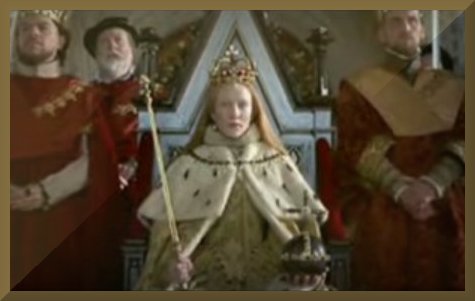
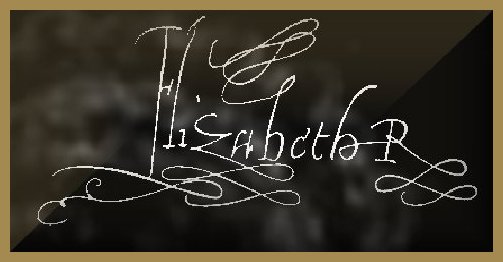
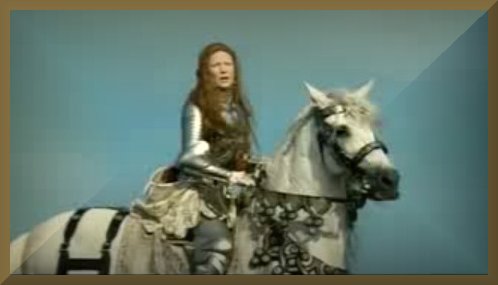
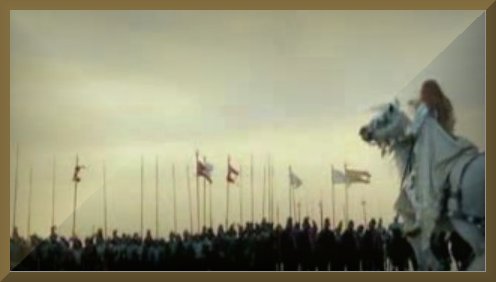
Queen Elizabeth 1 inspecting her Soldiers.
1584 - 1603.
 Captain Myles Standish and -
Captain Myles Standish and -

The Treaty of Nonsuch (1585) – War in the Netherlands.
The Treaty of Nonsuch stated that:
“The Queen of England should send to the United Provinces an aid
of 6000 footmen and one thousand horse, under the conduct of a Governor-General
who should be a person of quality and rank, well-affected to the true religion,
and under other good chiefs and captains, all of whom shall be paid by the
Queen as long as the war lasts.
The United Provinces, individually and collectively, bind
themselves, when, by God’s grace and her Majesty’s assistance, they shall be
re-established in peace and repose, to repay all that her Majesty shall have
dispersed, as well for the levy of troops and their transportation, as for
their wages…….
For greater assurance of the repayment the town of Flushing, the castle of Rammekens, in the isle of Walcheren, and the town of Brill, with two fortresses in Holland shall within one month of the confirmation of the Contract be placed in the hands of such governors as it shall please her Majesty to appoint until she shall be completely repaid.
American history records Captain Myles Standish - as asoldier in the army of Queen Elizabeth 1, in the War in the Netherlands.
Thus as a soldier in the army of Queen Elizabeth Myles
Standish was required to swear an oath of loyalty and allegiance to
his monarch. Consequently to be a soldier in the Queens army in the Netherlands Myles had to swear his oath of loyalty and allegiance between the date of
his date of birth in 1584 and Elizabeth’s death in 1603.
In 1585 when Myles was just one year old Queen Elizabeth signed
the Treaty of Nonsuch with the Dutch rebels, pledging 7000 troops and monetary
support. The desire of Queen Elizabeth was to return the Netherlands to their
old independence from the Spanish Crown.
The collection of State Papers Foreign,
for the period 1592 to 1603, documents a period of continuous warfare in
Western Europe in which political rivalries became intertwined fully with
ideological and religious division. The three major conflicts in this period
were on the sea with Spain, in France in order to prevent the triumph of the
Catholic League in the Wars of Religion, and in the Low Countries where the
fate of the Dutch Revolt was still undecided. The papers provide information on
the coordination of Anglo-Dutch Naval and military operations. The bulk of the
collection is from SP 78/France or SP 84/Holland. Also included are documents
dealing with the empire (SP 81), Northern Italy (SP92 and 99), and Spain (SP
94).
Anglo-Spanish relations before the Armada, 1567-88
In 1566, the Dutch revolt began. In the Netherlands the
people turned against Granvelle and Philip of Spain, and the Duke of Alva was
sent at the head of a great army to resolve the situation. The appearance of a
great army under Spanish command in the Netherlands changed the international
situation enormously. Many of Philip's advisors wanted him to take a harder
line against Protestant England, and the English themselves perceived that the
Spanish would try to assault Protestantism wherever it was found. The actions
of Alva in the Netherlands during the Dutch Revolt only augmented the image of
the Spanish King as wicked and hateful of heresy. The outbreak of the Second French War of Religion meant that France
would not be able to check Spanish power, and the English were fearful. The
first major clash occurred in 1568.
In an event known as the Affair of the Spanish Bullion, Elizabeth
seized five Spanish ships that were sailing to the Netherlands with £85,000 in
gold bullion to pay the Spanish Army. This was done perhaps in response to
Spanish attacks on Drake at San Juan de Ulua, which had been launched because
the Spanish guarded their trade monopolies jealously and thought Drake was
encroaching on them. The attack was carried out with great treachery because
Drake received the Spaniards into the harbour as friends. Roy Sloan argues that
news of this occurrence would not yet have reached England, however, and that
the Queen was merely reminding the Spanish King who controlled the Channel.
The money was officially the property of Genoese bankers until it reached
Burgundy, anyway, so legally Elizabeth was merely taking over the loan, a move
to which the Genoese were apparently agreeable. The Duke of Alva
was now in a dire situation because his army was owed months of back pay, and
he regarded this as an act of an enemy - in December of 1567, he had all
English merchants in the Netherlands seized and trade between England and
Spain/Burgundy broke down completely for five years.
So the war raged on, and it would take the death of both its
protagonists - Philip in 1598 and Elizabeth in 1603 - and new blood to end it.
Whilst we could question the wise ness of Elizabeth's foreign policy as it drew
her into combat with Europe's superpower, we should remember that she herself had done
little to provoke it, and had in many cases been acting in the belief that a
good offence was the best defence. Throughout the war she did try to seek peace
when possible, although she became increasingly embittered as time wore on. She
could not really have foreseen all the things that eventually drove her to war
(Spanish success in the Netherlands, events in France) and although both sides
had little to gain from it, it was in many ways inevitable. Queen Elizabeth I apparent vacillation over the Dutch Revolt is
possibly the most disputed aspect of her foreign policy. On two occasions she
was formally offered sovereignty of the rebel provinces, of Holland and Zeeland
in 1576 and of the United Provinces in 1585. The circumstances of both offers
were very similar, however different the outcomes. The course of the
negotiations reveals how Elizabeth's prevarication arose from a moral dilemma:
how to reconcile her acceptance of the legitimacy of the Dutch cause with her
conscientious objection to territorial expansion.
Standish Deed 404 - Letter dated 27th July 1588 - Extracted
by the Reverend West.
Master Edward Whalley's own recollections of the Spanish Armada attacking England.
1.
2.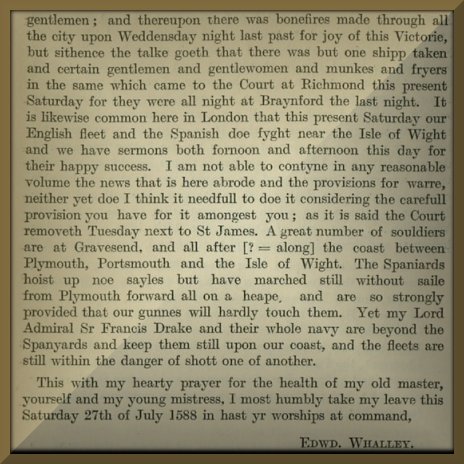
Elizabeth Tudor Queen of England.
Born: 7 Sep 1533, Greenwich Palace, London, England
Christened: 10 Sep 1533
Acceded: 17 Nov 1558, Hatfield House
Crowned: 15 Jan 1558, Westminster Abbey, London, England
Died: 24 Mar 1603, Richmond Palace, London, England
Buried: Westminster Abbey, London, England
Father:
HENRY VIII TUDOR (King of England)

![]()
Myles Standish
"From a documentary and historical perspective Myles Standish was only born in the year 1620 when he set foot upon Plymouth Rock in America ".
American history records that Myles Standish was a son of the House of Standish and that he named his own land allocation in America "Duxbury". Not one document in the House of Standish family papers names Myles Standish, but the very same family papers show that the House of Standish was the principle owner of the Manor of Duxbury from 1275 to 1812. Thus in 1620 when Myles Standish arrived in America and named his land allocation "Duxbury" he had to know that the House of Standish owned the Manor of Duxbury. Consequently for Myles to know that the Manor of Duxbury was owned by the House of Standish (when many learned scholars with very refined search technologies available to them at the year 2000 did not know that fact) Myles had to be a son of the House of Standish and he had to know the Manor of Duxbury in his childhood to have acquired knowledge of that fact.
Thank you to citizens in England, America, Australia, New Zealand and South
Africa for sharing information from privately held documentation on the Standish family.
It is a very substantial tribute to Myles Standish himself that over 130,000 citizens worldwide have visited his site in the first 12 months online. T ony Christopher LFH&HS
Link to - Lancashire Family History & Heraldry Society.
![]()
Do the historical records in Lancashire England provide any links with the official records of Myles Standish in America?
Links to -:
1. The Standish Family of the Pele Tower 1303 to 1647.
$$$. The Billion-Dollar Question.
Should it be (a) the Myles de Standish Monument or (b) the Myles de Haydock Monument?
Was Myles Standish (in common with his Irish and Canadian cousins) the great grandson of James Standish Esquire Lord of the Manor of Duxbury the second or younger brother from the house of Standish and thus Myles would be the great great grandson of Sir Alexander Standish Lord of the Manor of Standish 1468 – 1507?
2. The Standish Family of the Pele Tower 1647 to 1812.
The English Civil War and the new order.
1647. Colonel Richard Standish.
1768. Sir FRANK STANDISH
3. The Standish Family of the Burgh on the Manor of Duxbury Lancashire England 1490 to 1771.
if Myles were the son of Alexander Standish who in turn was the son of Alexander Standish and his wife Eleanor Stanley the great grandfather of Myles would be Thurston Standish of the Burgh upon Duxbury Manor the second son of Sir Alexander Standish lord of the manor of Standish - 1468 to 1507.
Was this the Birth place of Myles Standish ?
The Owl and Rat.
4. The Pilkington & Nightingale Families on the Manor of Duxbury Lancashire England.
The Pilkington sisters with the Christian names Rosa and Barbarie.
Was Myles Standish Educated at the James Pilkington Grammar School?
5. The Hall & Carr Families of the Manor of Duxbury Lancashire England 1812 to 1898.
1812.The alleged Hand of Fraud?
The unloved Lord of the Manor of Duxbury.
The Manor of Duxbury and the French King Louis Philippe 1773 - 1850.
Château de Chantilly and library the home of the Duxbury Manor book collection.
5.The Mayhew Family of England & The Mason Family of Ireland 1898 to 2008.
1898. Walter Mayhew - lord of the manor of Duxbury 1898 - 1931. Mr. Walter Mayhew was descended from a brother of Thomas Mayhew the colonial governor in 1641 of Martha's Vineyard, Nantucket, and the Elizabeth Islands in the United
States of America
1891- 1898.The Sale of the Manor of Duxbury.
![]()
Links On this page -:
The Family Tree of the Standish Family of the Manor of Standish - the Lancashire branches.
Population Statistics, Parish of Standish for the years 1542 - 1582 & 1801 - 1921.
The christian Name "MYLES" as used in Lancashire around the birth date of Myles Standish 1584.
Notes regarding Myles Standish and the Standish Families of England .
The Wills of Myles Standish & his son Alexander.
Myles Standish - A note of Caution.
![]()
The Family Tree of the Standish Family of the Manor of Standish - the Lancashire branches.
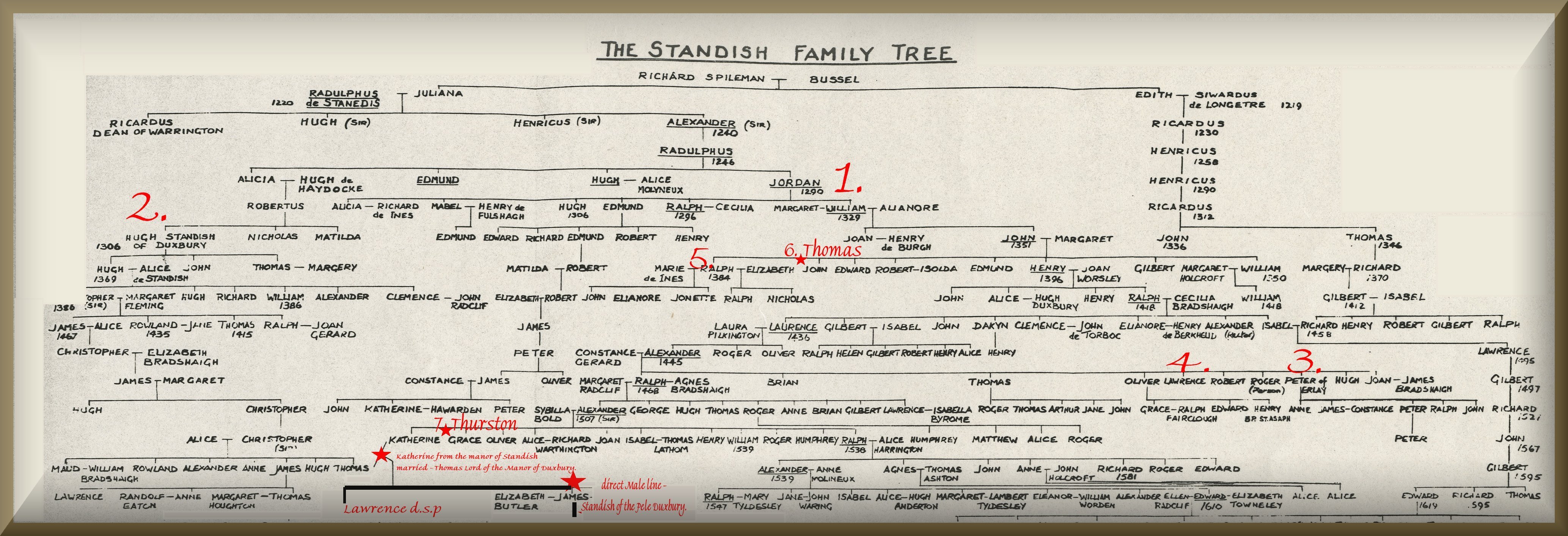
Key -:
1. Jordan Standish - direct male line of Manor of Standish.
2. Hugh Standish - direct male line of Manor of Duxbury.
3. Peter Standish the founder of the Arley branch of the Standish family.
4. Laurence Standish the founder of the Shevington branch of the Standish family.
5. Ralph Standish and Marie de Ince the founders of the Ormskirk / Scholes branch of the Standish family.
6. Thomas Standish the founder of the Gathurst branch of the Standish family.
7. Thurston Standish the founder of the Burgh branch of the Standish family - Manor of Duxbury.
![]()
Population Statistics, Parish of Standish for the years 1542 - 1582 (1584 birth date of Myles Standish)

Population Statistics, Parish of Standish for the years 1801 - 1921.
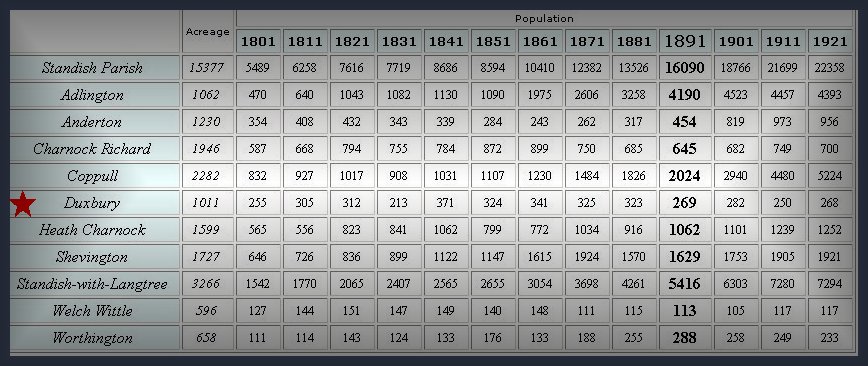
![]()
The christian Name "MYLES" as used in Lancashire around the birth date of Myles Standish 1584.
Myles the Christian name was unique in the Standish family in Lancashire.
Myles Standish was the only son of the Standishfamily to have been christened with the name up to his birth in 1584.
However the Christian name Myles was very common in other local Lancashire families between the years 1550 – 1650 and the probability that Myles was named after his mother’'s father is high due to the naming protocol in use in Lancashire at the time of his birth .

Myles Nightingale resident on the Manor of Duxbury in the year 1584.
Miles Bradshaw - International Genealogical Index / BI Gender: Male Birth: 1556 Of, Wigan, Lancashire, England.
Miles Hesketh - International Genealogical Index / BI Gender: Male Birth: 1559 Aughton, Lancashire, England.
MILES HESKETH - International Genealogical Index / BI Gender: Male Marriage: 21 JUN 1584 Ormskirk, Lancashire, England.
Miles Hesketh - International Genealogical Index / BI Gender: Male Christening: 15 APR 1619 Ormskirk, Lancashire, England.Mylles Somner - International Genealogical Index / BI Gender: Male Burial: 14 DEC 1546 Croston, Lancashire, England.
Myles Sumner - International Genealogical Index / BI Gender: Male Marriage: 30 OCT 1590 Croston, Lancashire, England.
Milonis Sumner - International Genealogical Index / BI Gender: Male Birth: 1592 Croston, Lancashire, England.
Miles Nightgall - International Genealogical Index / BI Gender: Male Birth: 1547 Of, Standish, Lancashire, England.Mylo Nightgall - International Genealogical Index / BI Gender: Male Christening: 27 NOV 1614 Standish, Lancashire, England.
Miles Nightgall - International Genealogical Index / BI Gender: Male Birth: 1622 Of, Chorley, Lancashire, England.
Myles Nightgall - International Genealogical Index / BIGender: Male Birth: 1628 Of, Blackrod, Lancashire, England.
MILES
INCE - International Genealogical Index /
BI Gender: Male Christening: 03 MAR 1592 Wigan, Lancashire, England.
MILES INCE - International Genealogical Index / BI Gender: Male Christening: 03 MAY 1622 Wigan, Lancashire, England.
Myles ASHTON - Ancestral File Gender: M Birth/Christening: 1539 Of, Ashton, Lancashire, England.
Myles ASHTON - Ancestral File Gender: M Marriage: 1564 Of, Irbig, Lancashire, England.
Miles Green - International Genealogical Index / BI Gender: Male Christening: 10 AUG 1574 Standish, Lancashire, England.
Miles Rigby - International Genealogical Index / BI Gender: Male Birth: 1584 Of, Wigan, Lancashire, England.
Myles Rigby - International Genealogical Index / BI Gender: Male Birth: 1586 Of, Ormskirk, Lancashire, England.
Miles Rigby - International Genealogical Index / BI Gender: Male Birth: 1590 Of, Ribchester, Lancashire, England.
Miles Rigby - International Genealogical Index / BI Gender: Male Marriage: 10 JUN 1609 Wigan, Lancashire, England.
Myles Butler - International Genealogical Index / BI Gender: Male Marriage: 05 JAN 1573 Of, Saint Helens, Lancashire, England.
Miles Verdun Butler Boteler Botiller - Pedigree Resource File Gender: M Birth/Christening: 1280 England.
Miles WASHINGTON - International Genealogical Index / BI Gender: <Male> Birth: 1477 Warton, , Lancashire, England.
Miles Washington - International Genealogical Index / BI Gender: Male Birth: 1484 Of Warton, , Lancashire, EnglandMiles Washington - International Genealogical Index / BI Gender: Male Birth: 1491 Warton, , Lancashire, England.
Miles Charnock - International Genealogical Index / BI Gender: <Male> Birth: 1553 Of, Wigan, Lancashire, England.
Miles Charnocke - International Genealogical Index / BI Gender: <Male> Birth: 1560 Of, Charnock Richard, Lancashire, England.
Miles Charnocke - International Genealogical Index / BI Gender: Male Burial: 23 JUN 1592 Of, Wigan, Lancashire, England.
Myles Dewhurst - International Genealogical Index / BI Gender: Male Christening: 22 FEB 1599 Of, Ribchester, Lancashire, England.
Miles Gardiner - International Genealogical Index / BI Gender: Male Birth: 1559 Of, Wigan, Lancashire, England.
Miles Parker - International Genealogical Index / BI Gender: Male Birth: 24 JUN 1584 Farnworth, , Lancashire, England.
Myles Standish - International Genealogical Index / BI Gender: Male Birth: 1586 Duxbury,Lancashire, England ?
Myles Standish - Pedigree Resource File Gender: M Birth/Christening: 1584 Duxbury Hall,Lancashire,England ?
Myles (Miles) STANDISH - Pedigree Resource File Gender: M Birth/Christening: 1583/84 Ellanbane, Isle Of Man, Lancashire, England ?
Miles LATHAM - International Genealogical Index / BI Gender: Male Christening: 21 APR 1587 Wigan, Lancashire, England.
MYLES SPAKEMAN - International Genealogical Index / BI Gender: Male Christening: 14 FEB 1593 Leigh, Lancashire, England.
MYLES SPAKEMAN - International Genealogical Index / BI Gender: Male Christening: 01 APR 1559 Leigh, Lancashire, England.
MYLES SPAKEMAN - International Genealogical Index / BI Gender: Male Christening: 14 FEB 1593 Leigh, Lancashire, England.
Lancashire County Archives.
FILE [no title] - ref. DDSC 57/14 - date: 5 Sep. 1507
[from Scope and Content] Bond: for £40: Miles Gerard, esq., William Worthyngton of Shevynton, and Hugh Aspenwall, to Hugh
Wodward—for M.G. to keep award of Thomas Gerard of Ines and William Lathum of Perbald, esqs., in dispute with H.W.
and Jane his wife, widow of Hugh Bykerstath.
FILE [no title] - ref. DDHE 11/48 - date: 6
Oct. 1519
from Scope and Content] Feoffment: for £4.10.0: Miles Ferrer of Croston to Thomas Hesketh, esq.—messuage in Croston --: Seal.
Hawkshead
Estates - ref. DDHK - Fisher’s
Tenements in Shevington.
FILE [no title] - ref. DDHK 3/4/162 - date: 1684/5 [from Scope and Content] 2a) Miles Gerard
of Ormskirk, gentleman.
FILE [no title] - ref. DDHK 3/4/167 - date: 1704 [from Scope and Content] 2) Miles Gerard
of Upholland.
![]()
Notes regarding Myles Standish and the Standish Familiesof England .
1. The Christian name Myles was not used by any branch of the Standish family from the earliest documents of the Standish family in the 12 century to the birth of Myles Standish in 1584 thus many researchers have concluded that Myles was named from the female line of his family possibly his mothers father.
2. No documentary evidence exists prior to the year 1620 (when Myles Standish set foot upon Plymouth Rock in the USA) to confirm the birth date of Myles or the date of his first marriage nor is there any evidence of his Military career in any document or archive in England including the Isle of Man. From a documentary stand point Myles Standish was officially born when he set foot upon Plymouth Rock in the USA in 1620.
3. Consequently researchers of the family history of Myles Standish refer to American historical documentation between 1620 – 1655 that record the life of Myles Standish in America and then they seek to relate the contents of those American documents to the contents of Standish family documents/papers in England and the Isle of Man that relate to the years 1584 – 1620. None of the Standish family documents/papers in England and the Isle of Man that relate to the years 1584 – 1620 refer to or record the name Myles Standish and thus there is no documented proof that Myles Standish ever existed.
4. Many excellent books and theories that have been produced about the origins of Myles Standish and the claims postulated regarding the family history of Myles can only be authenticated by appraisal under the legal term used in English Law to establish settlements of claims of inheritance -: “the balance of probability”. Thus any family tree that scores the highest level of legal points in a court of law by the determination of the balance of probability secures the inheritance by “Lawful Descent”.
5. The Evidence from American history.
(a) American documentation for the years 1620 to 1655 suggests that Myles Standish was born around 1584 and that he named his land allocation in America "Duxbury".
(b) The signature Myles Standish confirming the use of the Christian name Myles is also recorded (including the Christian names of his two wives Rose and Barbara) in American documentation for the years 1620 to 1655.
(c) Contained within the will and legal testament of Myles Standish dated 1655 are the ultimate and most often quoted words used by all Standish family history researchers as shown in the concluding paragraph of his last will and testament dated March 7th 1655 -:
1. “My great G(ran)dfather being a 2cond or younger brother from the house of Standish of Standish”.
2. I give unto my son & heire apparent Allexander Standish all my lands as heire apparent by Lawful Descent in Ormistick Borsconge Wrightington Maudsley Newburrow Craston and the Isle of man and given to mee as right heire by lawfull Descent but Surruptuously Detained from mee - Myles Standish
The Will of Myles Standish - March 7th 1655 - Duxbury America.
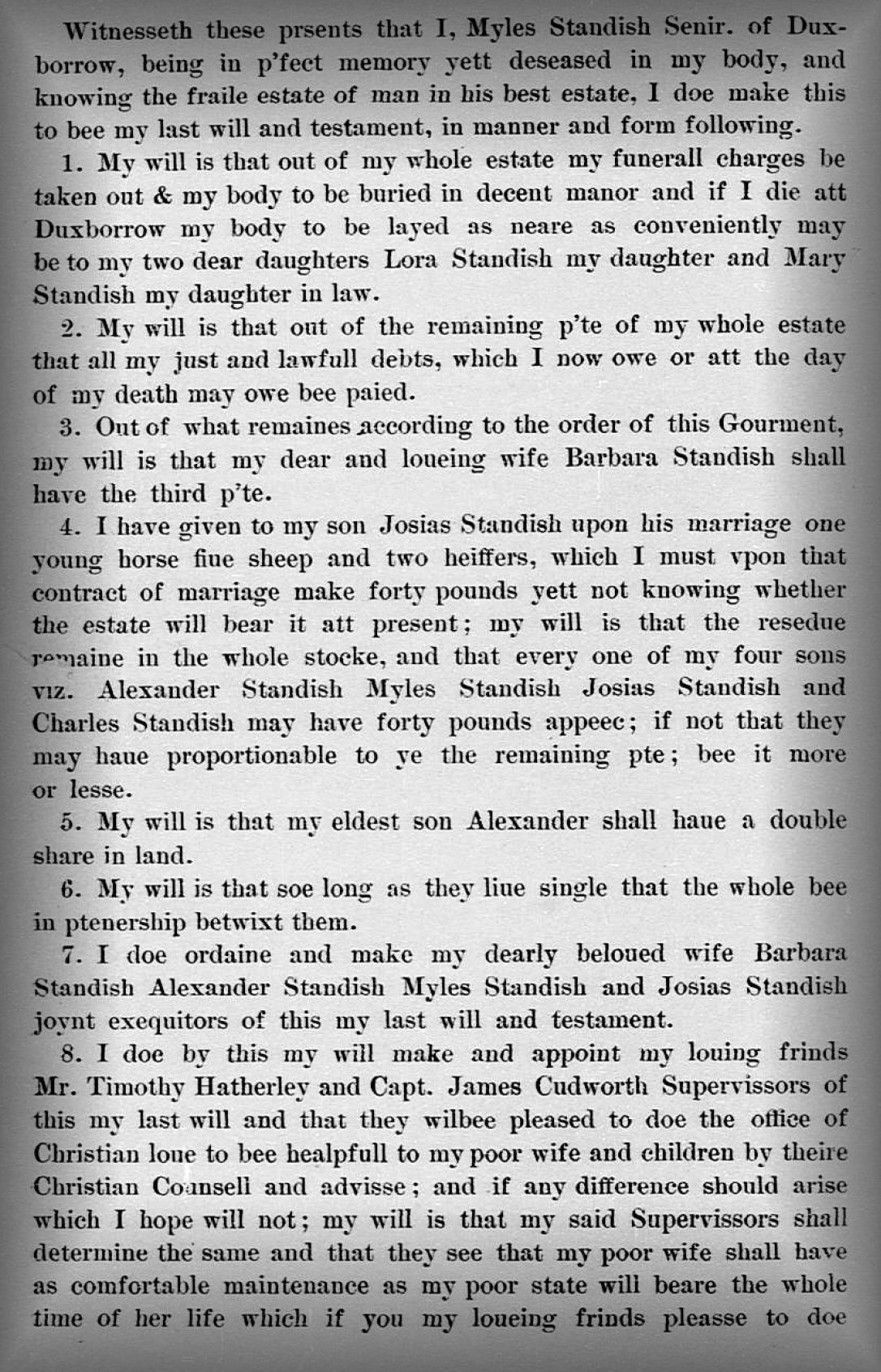

The Will of Alexander Standish - July 5 th 1702 - Duxbury America.


Myles Standish - A note of Caution -
Cautionshould be taken when referring to the lands recorded in the will of Myles Standish. The reverend T C Porteus suggested that the lands contained within a rental of Margaret Standish of Ormskirk in the year 1529 must be the same lands claimed in the will of Myles Standish in 1655 some 127 years later? Reverend Porteus also noted that the value of the rental of £3.12.10d was a very merger sum of money in the year 1529 and worth far less in the year 1656, compared to the total value of the estate of Myles Standish in the year 1656 (£258 - $ 13,000 ) which was a very substantial sum of money. The rental of Margaret Standish of Ormskirk in the year 1529 represents such a small sum of money annually that it would be totally uneconomic to travel from America to England to claim the ownership of the rental.The annual sum of money generated by the rental could not repay the costs of instructing an attorney to undertake the recovery of the rental. Consequently the lands claimed by Myles in his will of 1655 and in the will of his son Alexander dated 1702 must have been of a very substantial value far more than the £3.12.10d collected annually in the rental of Margaret Standish of Ormskirk in the year 1529.
The rental of Margaret Standish of Ormskirk in the year 1529 - by the reverend T C Porteus.
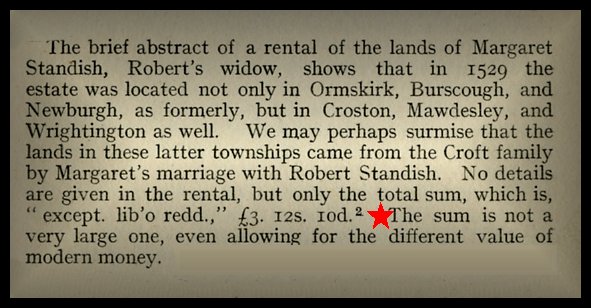
The lands claimed by Myles in his will of 1655 and in the will of his son Alexander dated 1702. - by the reverend T C Porteus.


6. The documentary evidence within the Lancashire County Archives indicate that the l ands of Margaret Standish had been purchased from the Standish family of Ormskirk and were in the lawful ownership of William Stopford of Bispham Lancashire in the year 1580.
(a) In 1584 the year Myles Standish is said to have been born William Stopford died and was buried on the East side of the Church of St. Mary at Eccleston Lancashire.
(b) In the year 1590 the lands original owned by the Standish family of Ormskirk were sold on to the Hesketh family of Rufford Lancashire .
(c) At the time Myles was born it was a common practice within the middle classes to purchase the lease of small plots of land – farms –
cottages – barns and fishponds and then sell the lease on at a profit or
collect the rent for the income. Thus the archives in England have many documents relating
to these business transactions.
(d) The Dicconson family of Eccleston, the Mawdesley family of Mawdesley, the Hesketh and Higham families (and other local families) held land or property in common with the locations stated in the will of Myles between the years 1540 t0 1655. Land and property normally entered into a family upon marriage, the bride’s family transferring ownership as part of the marriage contract. Consequently the lands mentioned in the will of Myles may not have been Originally Standish Lands but lands from the female line of his descent.
(e) Many scholars researching the family
history of Myles Standish have arrived at the conclusion that if the birthplace of
Myles Standish was upon the Manor of Duxbury then his connection with the
Standish family of Standish had to be a very close one. Thus the Standish of
Standish ancestor closest to the descent of Myles has been determined to be Sir
Alexander Standish Lord of the Manor of Standish 1468 to 1507.
![]()

- Webmaster